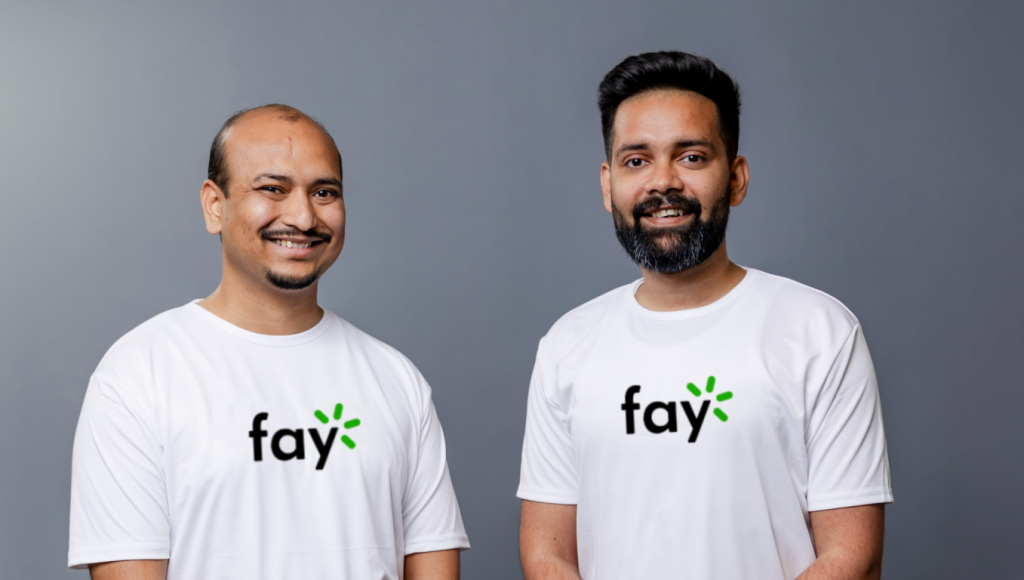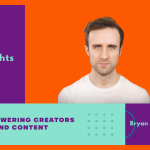For years, automation has meant rigid workflows and complex rule-based systems—tools that assist but never truly take over. Fay is changing that with an autonomous, memory-driven approach that eliminates busywork entirely. Instead of requiring constant oversight, Fay operates for weeks on its own, adapting in real time and handling tasks end-to-end. Co-founder Harsh Nigam shares how they’re not just streamlining work but fundamentally redefining what AI can achieve in the workplace.

Rohit Hazra (left), CTO, and Harsh Nigam (right), CEO of Fay.
1. What inspired the creation of Fay, and how does it align with your mission to free humanity from busy work by 2030?
Harsh Nigam: We all watch developers harness AI to automate their grind while the rest of us are drowned in spreadsheets, emails, and manual workflows. The irony? AI’s real power wasn’t in coding tricks; it was in freeing humanity from soul-crushing busywork.
We decided to tackle it first-hand, but every tool fell short: brittle workflows, amnesiac bots, and tasks abandoned mid-execution.
By late 2024, we cracked it! We have a system that thinks, adapts, and works for weeks without handholding. Fay was born not to “replace you” but to replace the drudgery: 50% of work today is repetitive, and 90% of employees are disengaged. Imagine clawing back 2-4 hours daily.
By 2030, that’s not just productivity—it’s 10 years of progress compressed into 7 years. Fay is the engine; human creativity is the rocket fuel.
2. Fay’s revolutionary autonomy enables it to operate for hours or weeks without oversight. Can you explain how this works?
Harsh Nigam: All LLMs crash into two walls: memory and adaptability. They’re stuck replaying the last 10 steps like a broken record, forgetting critical context. Fay sidesteps this with a hybrid memory architecture: short-term for real-time actions (scraping data, sending emails) and a long-term graph that logs every API call, error, and decision across weeks. Suppose a tool fails (e.g., Zendesk’s API times out). In that case, self-reflection algorithms analyze prior steps, reroute to an alternative API, and resume without losing track—like a programmer troubleshooting mid-sprint.
Under the hood, dynamic context management slices tasks into prioritized threads. Instead of bombarding the AI with all data, Fay isolates mission-critical streams (uncontacted leads) and shelves older data into retrievable banks. Paired with fine-tuned LLMs trained on toolchains, it self-corrects silently. The result? An agent that treats weeks-long workflows as a single marathon, not a relay race requiring human baton passes.
3. With no workflows required, how does Fay streamline complex tasks for users?
Harsh Nigam: Legacy automation forces you to map every “if,” “then,” and “maybe”—a nightmare for tasks like auditing patents or migrating ERP data. Fay eats complexity for breakfast. When you say, “Find all YC AI companies and email their founders,” its fine-tuned LLM dissects the prompt into dynamic sub-tasks: scrape directories, cross-reference Crunchbase, validate emails, draft personalized copy. No flowcharts needed. A prompt is all you need.
It’s like having a Swiss Army knife with infinite tools. Fay’s memory tracks dependencies—if step three fails (say, a founder’s email is missing), it loops back to step two, hunts for LinkedIn profiles, and jumps to step four without dropping context. Meanwhile, self-reflection algorithms audit progress, killing ends before they waste hours. Users shout the goal; Fay handles the how.
4. What role does Fay’s advanced memory system and real-time learning play in delivering accurate outcomes?
Harsh Nigam: LLMs are notoriously probabilistic—ask twice, and you’ll get two different answers. Fay’s memory system acts as a grounding wire. Take compliance audits: when parsing 10,000 contracts, Fay logs every clause, cross-references regulations, and flags risks in a structured graph. If a document is missing, it doesn’t hallucinate—it backtracks, rechecks sources and only returns verified gaps.
Real-time learning kicks in during tasks like patent monitoring. Say a new filing overlaps with your IP. Instead of a one-off alert, Fay correlates it with prior cases, legal precedents, and internal R&D logs stored in long-term memory. This creates a feedback loop—every decision reinforces accuracy, like a lawyer citing case law mid-trial.
The twist? We forced determinism onto LLMs. By anchoring actions to tool outputs (APIs, databases) and auditing every step, Fay delivers the same result every time—even if the LLM’s initial guess was wrong. It’s not magic; it’s ruthless fact-checking fused with adaptive memory.
5. Fay supports thousands of integrations with tools like Greenhouse and HubSpot. How does this level of compatibility benefit users?
Harsh Nigam: Companies today are Frankenstein—stitched together with Greenhouse for hiring, HubSpot for sales, and legacy ERPs for finance. Most AI tools force you to amputate limbs to fit their ecosystem. Fay’s “no loyalty” approach lets it plug into any tool, old or new because real workflows don’t care about vendor politics.
When a recruiter says, “Match Workday candidates to open roles,” Fay doesn’t ask you to migrate data—it pulls from Workday’s API, cross-references LinkedIn, and dumps results into Google Sheets. If sales need HubSpot leads enriched with Crunchbase funding data? Done, without a single Zapier zap.
Here’s the kicker: Incumbents lock you in; Fay frees you. Treating every tool as a first-class citizen future-proofs your stack. Tomorrow’s new HR software? Fay adapts overnight. Competitors can’t replicate this—their business models rely on walls. Ours thrives in the wild, messy reality of enterprise tech.
6. How does Fay’s ability to self-reflect and optimize contextually make it unique compared to traditional automation tools?
Harsh Nigam: Traditional automation is like a train—rigid tracks, no detours. Break a rail, and everything derails. Fay’s self-reflection acts as a GPS for chaos. When auditing 10k contracts, most tools follow static rules. Fay? It notices a clause that seems compliant but conflicts with a new regulation buried in last week’s legal update. It pauses, cross-references the change in its memory graph, flags the risk, and updates the audit protocol—live.
This isn’t just “if-else” logic. It’s contextual awareness. Say you’re migrating CRM data: halfway through, Salesforce’s API throttles requests. Legacy tools freeze. Fay self-reflects, identifies the bottleneck, switches to batch processing, and resumes—all while keeping the original task’s intent intact.
The breakthrough? Fay’s LLMs aren’t just generating text—they’re running a live debugger on their logic. It’s the first-ever system where the AI critiques itself, turning probabilistic guesses into deterministic outcomes. Competitors automate steps; Fay automates judgment.
7. What industries or use cases have seen the most transformative impact with Fay?
Harsh Nigam: Early adopters? VCs automating startup sourcing—Fay chews through Crunchbase, filters for “AI agents + seed stage,” and spits out investor memos in minutes. Sales teams weaponize it too: “Alert me if any Series B healthtech startups secure funding,” and Fay stalks LinkedIn, news, and SEC filings, updating HubSpot before your standup.
One impact researcher’s prompt: “Correlate regional education access with maternal health outcomes in Sub-Saharan Africa.” Fay mines 10,000+ PDFs, maps clusters, and surfaces villages where school construction could slash infant mortality by 18%.
The kicker? We’re still in the early innings, but the signals scream potential. Every sector drowning in unstructured data—education, healthcare, climate—is ripe for Fay’s brand of autonomous grunt work. The tech works; now it’s about scaling the vision.
8. Can you share a success story where Fay significantly improved productivity or created measurable outcomes for a user or team?
Harsh Nigam: One of our earliest investors was drowning in deal flow. His old routine was spending four hours daily sifting through PitchBook, AngelList, and cold emails. With Fay, he fired off: “Find all seed-stage AI agent startups in SF, pull founder bios, revenue metrics, and draft intro emails.”
Results? 2.3 hours reclaimed daily. Fay autogenerated 40+ qualified leads/week (up from 15 manually), and his email response rate jumped 22% because pitches were hyper-personalized (e.g., “Congrats on your YC exit—let’s discuss agentic workflows”).
The kicker: The deal flow has doubled within 4 weeks. “It’s like cloning myself,” he said, “but the clone works nights and doesn’t miss details.”
9. What challenges have you faced while developing Fay, and how have you addressed them?
Harsh Nigam: 2024’s battle was technical alchemy, forcing chaotic LLMs to act deterministic. Imagine teaching a poet to do calculus—every “hallucination” crashed workflows. We brute-forced it with fine-tuned models, memory graphs, and a self-reflection layer that ruthlessly audits outputs.
Now? The war’s psychological. Users don’t trust autonomy. One founder kept micromanaging Fay’s entries on Google Sheets until we showed her our AI’s accuracy rate. Early adopters demanded simplicity, so we built prebuilt prompts (“Audit all contracts for compliance risks”) and one-click integrations.
The fix? Obsession. Weekly “grind sessions” with users—VCs, ops teams, sales teams, journalists—to hack their blockers.
10. What personal sacrifices or pivotal decisions have shaped your journey as a founder?
Harsh Nigam: In May 2024, we bet everything on a one-way ticket to SF—two suitcases, zero backup plan. Families asked, “Why shut down your successful business?” But when you’re building tech this bleeding edge, halfway isn’t an option. For six months, our team lived out of a cramped apartment-turned-office, coding everywhere while surviving on Trader Joe’s ramen. Birthdays? Forgotten. Weddings? Missed.
The hardest call? Prioritizing Fay over family. We’re extremely lucky to have amazing Family support. But every 3 AM breakthrough—like cracking deterministic LLMs—felt like oxygen. People called us delusional: “Agents can’t run for weeks!” We proved them wrong by obsessing over user pain points, not pitch decks.
The turning point? When early adopters—VCs and researchers—started reporting hours saved daily, we knew the sacrifices weren’t for us. They were, for everyone, still stuck in spreadsheet hell.
11. What does success look like for you and Fay in the next 5–10 years?
Harsh Nigam: Success? A world where “busywork” is a museum relic. In five years, Fay will be the silent workforce behind breakthroughs: researchers curing diseases faster by automating literature reviews, educators personalizing curricula in real-time, and cities optimizing energy grids via autonomous audits.
By 2030, we will measure the impact in years reclaimed. Imagine a climate scientist running 10,000 climate models via a single prompt or a solo founder scaling to IPO without hiring an ops team. Fay is not just a tool—it’s the default layer between human intent and execution, woven into every industry.
The kicker: We’ll stop counting integrations because every tool speaks to Fay. Legacy workflows? Gone. The 40% productivity leap isn’t a dream—it’s the floor. And somewhere in an SF apartment, our team finally sleeps… knowing busywork lost the war.
12. What does a typical day in your life as a founder look like, and how do you stay motivated?
Harsh Nigam: The morning starts with user feedback calls. Feedback isn’t just noise—it’s our roadmap. Our north star? “Give everyone one hour back. Today.”
Noon: Product huddle. “Why do users still feel they need scripting skills?” We revamped the prompt builder and tested it with a sales rep. Her “Update Salesforce leads from this spreadsheet” works in plain English. She texts: “I just hacked my job without code.”
Nights? Obsessing over dashboards. A 3% drop in DAUs—why? Digging deeper: new users bail during HubSpot setup. Tomorrow’s fix: one-click “connect your CRM.”
The fuel? Every “Wait, that’s all I have to do?” from users. We’re not just saving hours; we’re erasing the lie that automation requires a PhD.
Editor’s Note
Speaking with Harsh Nigam, one thing is clear—Fay isn’t just another automation tool; it’s a glimpse into a future where AI doesn’t just assist, but truly works. Harsh isn’t interested in incremental improvements or making automation slightly easier—he’s dismantling the very need for manual workflows. If Fay delivers on its vision, the idea of spending hours on emails, spreadsheets, and administrative tasks could soon feel as outdated as dial-up internet.



